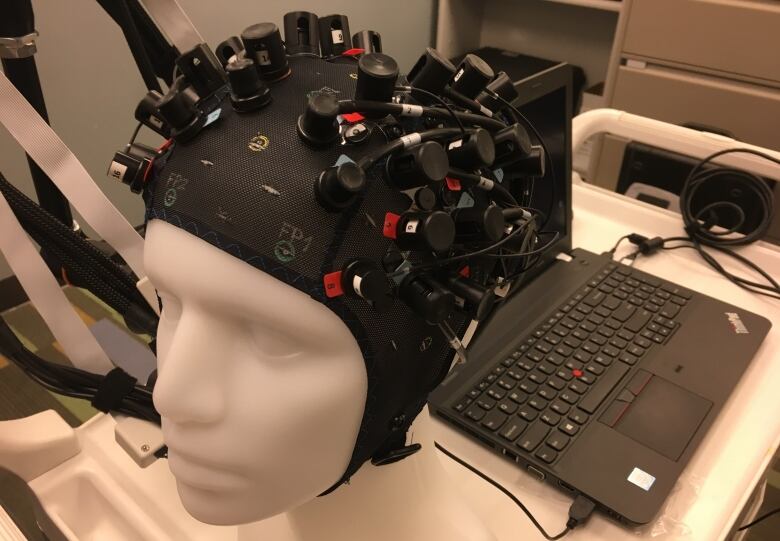Calgary researchers develop tool to literally shine light on concussions
Portable imaging system measures communication in the brain by measuring oxygen levels
Researchers at the University of Calgary say they have developed a portable brain-imaging system that would literally shed light on concussions.
Symptoms of a concussion can vary greatly between individuals and include headaches, nausea, loss of memory and lack of co-ordination, which make it difficult to find treatment options.
U of C scientist Jeff Dunn says there has been no accepted way to get an image of a concussion, but he and his team have developed a device,called a Near-Infrared Spectroscopy, that measures communication in the brain by measuring oxygen levels in blood.
Results show these patterns change after concussion.

The device a cap thatcontains small lights with sensors connected to a computer is placed on the top of the head to monitor and measure brain activity while the patient looks at a picture or does a simple activity.
"When the brain activates, blood flow goes up but oxygen levels also go up, so the blood actually becomes redder as the brain activates," Dunn said.
"And we measure that so we shine a light in and we can see that change in oxygen level and measure the change in absorption."

Dunn hopes the images will show a connection between symptoms and abnormalities in the brain that could help doctors identify treatment protocols and recovery timelines.
"What this would be useful for is looking at how different treatments might improve your outcome," he said.
Doctors will be using the technology in an upcoming study at the Alberta Children's Hospital.
"We will be able to follow young patients over time to establish whether this new technology can help us determine the extent of the injury and how the brain is recovering," said Dunn.
- MORE ALBERTA NEWS|Alberta is racking up debt, so just how much are Albertans willing to take?
- MORE ALBERTA NEWS|'It's not impossible': Western Canada's risk of water shortages rising
With files from Elissa Carpenter













_(720p).jpg)


 OFFICIAL HD MUSIC VIDEO.jpg)
.jpg)



























































































